
Burning the forest to bring it back
Tomorrow is a moderately biggish day for me. We’re installing a forest management demonstration project on a 40 acre block here on the research station where I live and work. We’ve got a forested stand that has a mix of oaks (Quercus spp.), hickories (Carya spp.), pines (Pinus spp.), and red maple (Acer rubrum), and our goal is to 1) divide the forest into management blocks, 2) identify and implement appropriate silvicultural practices, and 3) monitor and maintain these blocks for use as a guide during our various field days, 4-H programs, school tours, and other forms of community education.
We’re currently in the middle of step 2, and tomorrow looks like it may be the day when we implement the most entertaining silvicultural practice of them all: prescribed fire!
Wow. I didn’t figure anyone would ever read this far into this post. Thanks! To those who are curious, I’m going to describe what we’re dealing with, why we think prescribed fire is a good method of achieving our objective in more detail.
Just to give you a visual for the project:
<Click to enlarge, but it might take a minute for the full sized pic to download, ArcGIS provides a very high-resolution aerial image, much like the user-friendly Google Earth. If a new window or tab does not open when you click on any of the pictures, the “back” button will return you to this page.>
So, the current situation:
Our local and regional market is a very oak/pine-friendly environment. The sawmills in the area prefer to cut oak more than any other hardwood species we readily grow, such as the hickory, elm, gum, and the occasional red maple (aka soft maple). They also like to cut pine, which is so valued that it is essentially its own market, and we monitor its prices in a separate report. Thus, most people who have questions for us about land management are asking about how to manage oaks and pines.
Up until now, we’ve never had a handy place where we could take these individuals to show them what their options are, and how we achieved those results. It’s been like giving presentations to either completely clueless people, or people with just the vaguest understanding of forestry, without a PowerPoint slide-show, or a chalkboard. Which is to say, challenging.
So we want to devote our available space to methods of regenerating oak and pine (you need lots of little trees to replace the big trees). Thus, we’ve got about half the acreage devoted to growing oak (western blocks), and half devoted to growing pine (eastern blocks).
Now, the stand is currently in moderately poor repair. It doesn’t have the world’s greatest soil, the timber there has a large percentage of suppressed trees, and the species composition isn’t favorable in the oak blocks.
Which means: We’ve got oaks, but they’re short and often bushy, rather than tree-like. There aren’t many big trees, plus many of the small trees are crap, and we don’t want to keep on growing crap. The pine that is there has grown like a bat outta hell, but if we don’t thin it, about 1/3 to 1/2 of the trees will die.
How do we promote seed germination, and thus regeneration, of the oaks and pines?
Well, the thing about oaks and pines is that they’re major producers of leaves and needles, along with other woody debris and general forest litter. Every year, all of the oak trees shed massive crowns full of leaves, blanketing the whole land under a thick carpet of leaves. These decompose fairly quickly, but the duff layer we’ve got covering our forest floor can be somewhat thick (3-4 inches).
While pine trees don’t shed all of their needles, they still drop a percentage of their needles every year as well. Furthermore, a pine’s needle is a lot tougher than an oak’s leaf. The tree keeps needles for multiple years, it grows them to last. This also has the effect of creating a thick duff layer in the pine dominated portions of the forest.
Basic planting 101: We need to remove the duff layer, expose bare mineral soil, and get seed down onto that soil so it can germinate. This is where the fire comes in. =) We’re going to burn half of each one of those blocks to remove said duff layer.
We’re also hoping that fire plays a role in managing our other problem…
Competition.
See, not all trees like the same growing conditions. They’re just like your house plants and the flowers and bushes in your yard; some like dark, wet places, and some prefer open, sunny environments. We call this characteristic of a plant species shade tolerance. It just so happens that oak and pine, our two most valuable species, aren’t on the climax species list for our region. The shade tolerant species in our forests, the red maple, persimmon, dogwood, and the occasional beech would all take over, due to their ability to survive in shade as young trees.
In fact, the only reason our forests have oaks and hickories in them at all is because of natural disturbance and the fires used by the Indians who used to live in this area before European colonization.
It is imperative. We’ve got to get more light down to the forest floor. We’re hoping that the fire will remove a lot of the small understory trees, and we’re going to cut down the poorest formed midstory and canopy trees. On the other half of each block, we injected each one of those trees with a special form of salt water to kill them, called tree injection. That was really labor intensive, and my elbow is still aching, so I’m really hoping the fire does its business and I don’t have to inject the other half of the forest. =)
The goal on everything but the clear-cut-plant-to-pine block is to open up only the biggest, most nicely formed oaks and pines to scatter seed onto freshly exposed bare mineral soil. Tomorrow’s possible fire is a huge step in this direction. I am not worried. I’ve been doing this stuff for a living for the last decade, I am confident we will succeed. I am excited!
Latest posts by Mike McGowan (Posts)
- From one single father to the next - July 20, 2012
- Why isn’t anyone talking about the man - February 13, 2012
- Questions about the power of precedent - February 8, 2012
- Suffer not the Innocent to find relief - February 2, 2012
- Romney v. Newt: How the GOP and the conservative media killed the TEA Party - January 31, 2012
 Print This Post
Print This Post

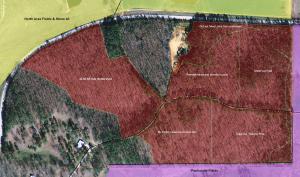
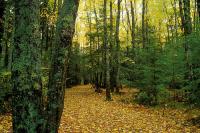
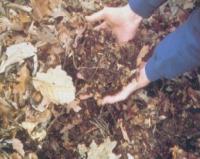
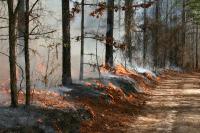
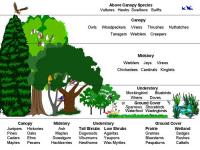



Discussion Area - Leave a Comment